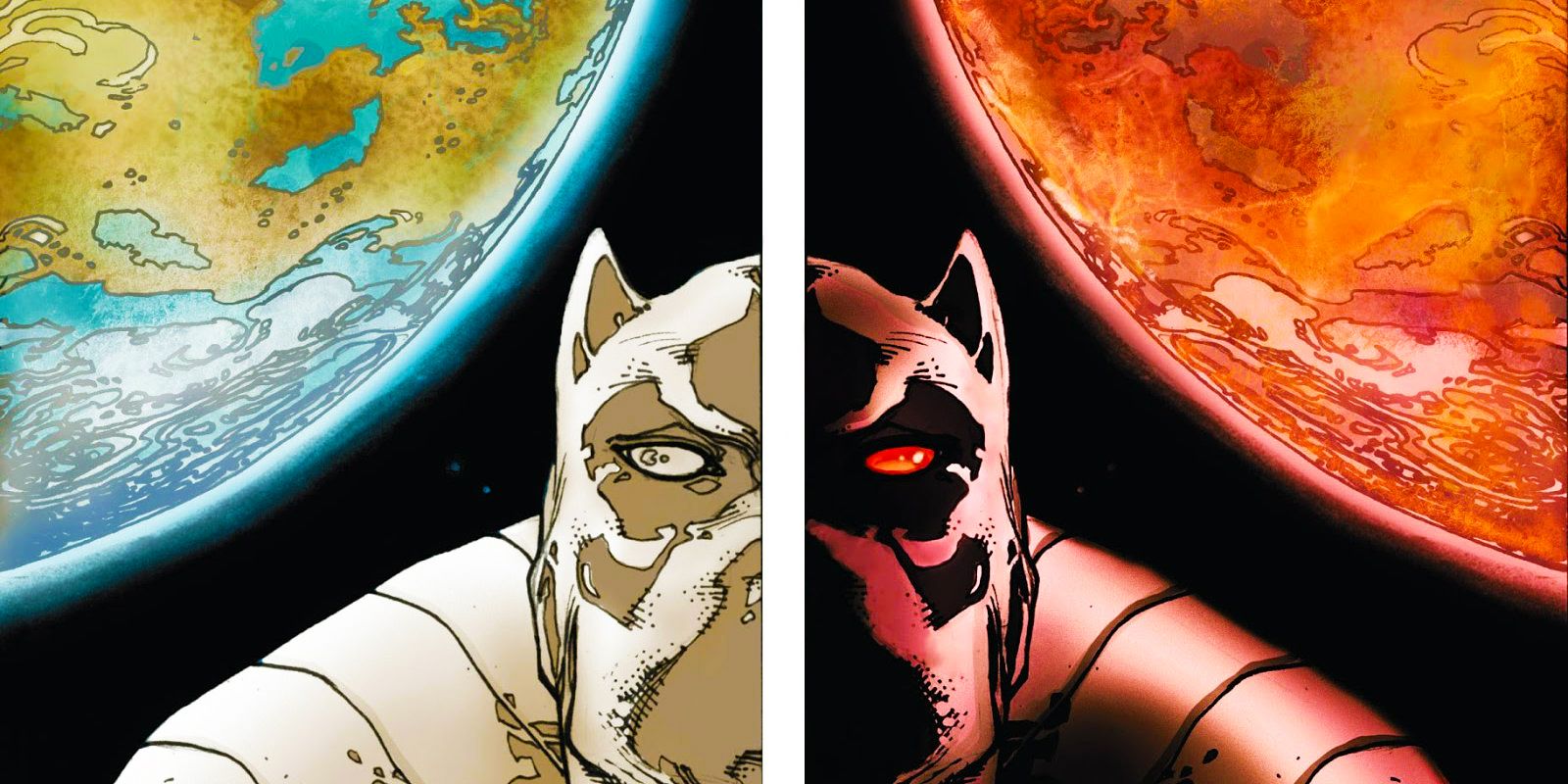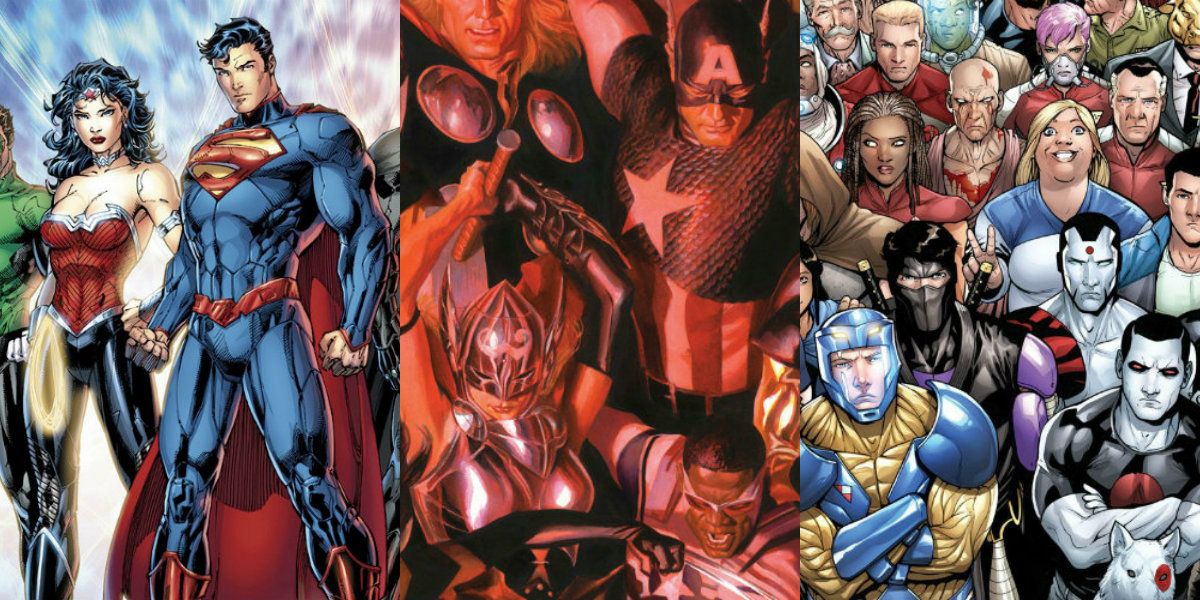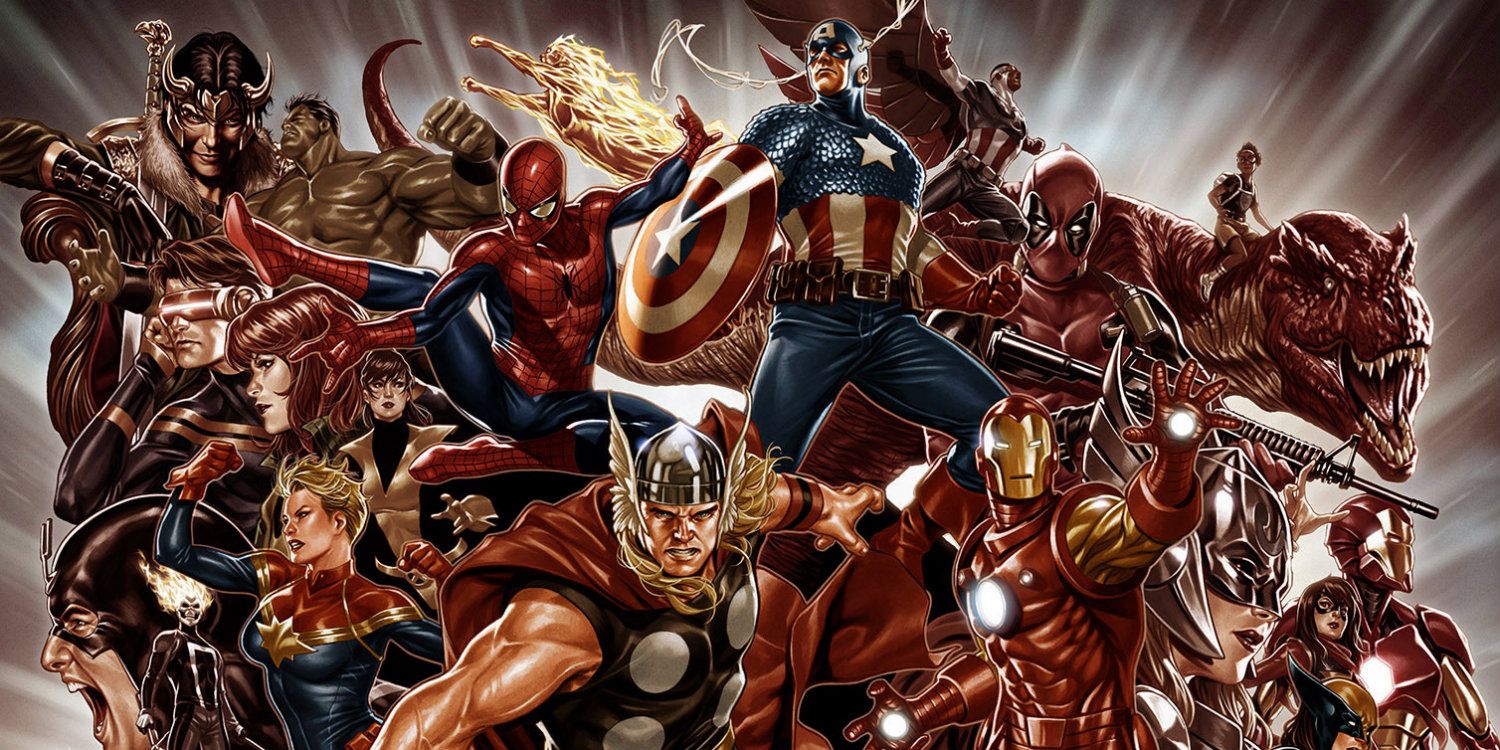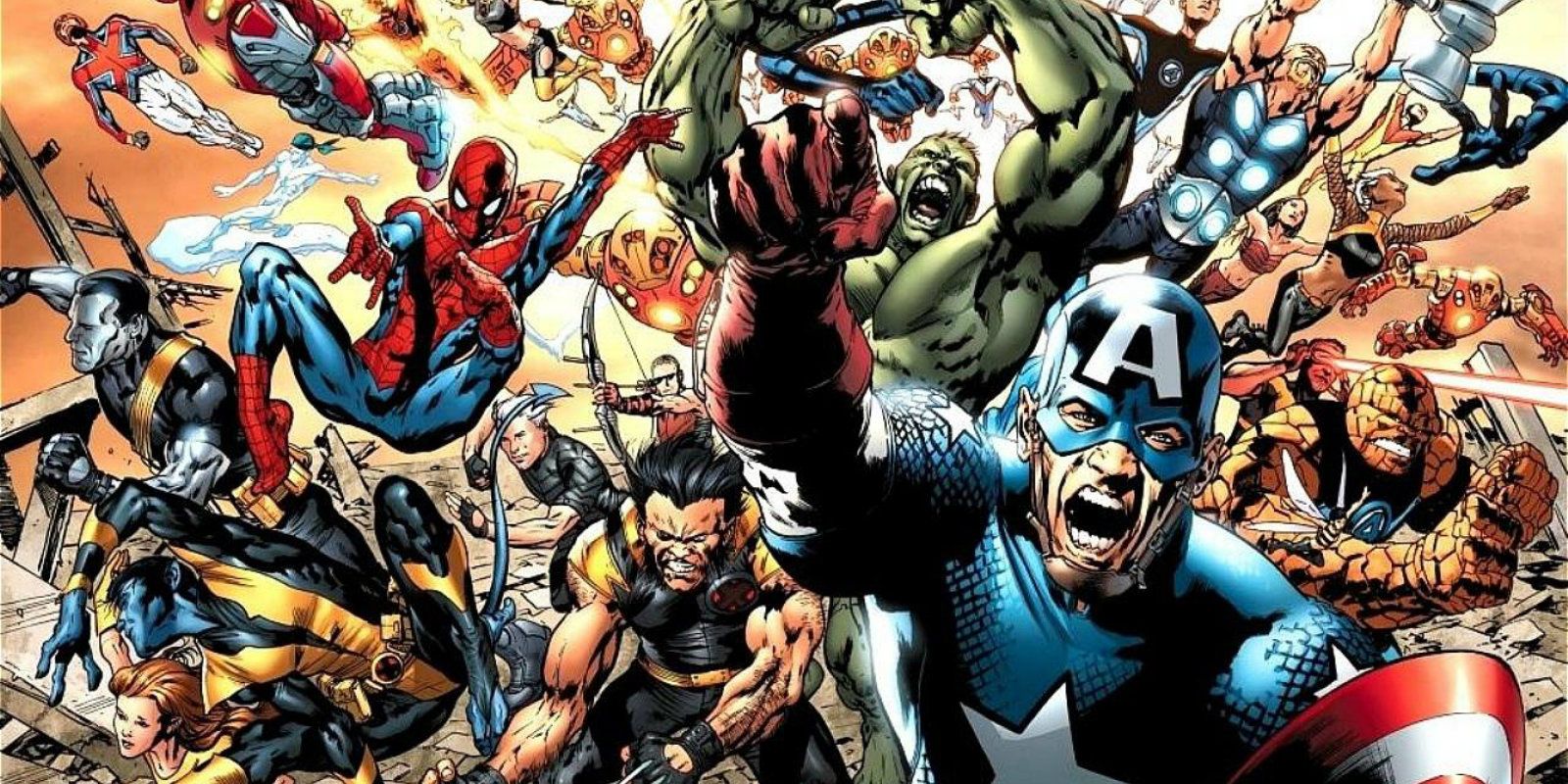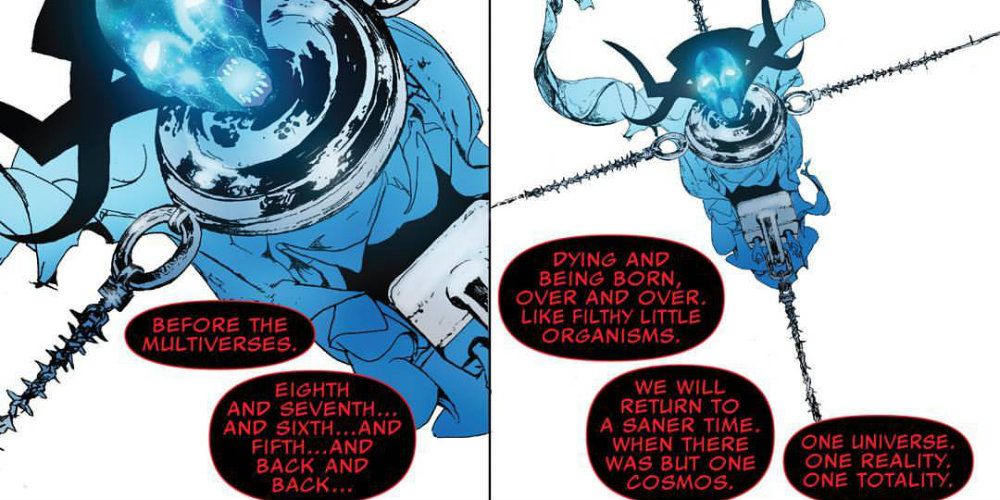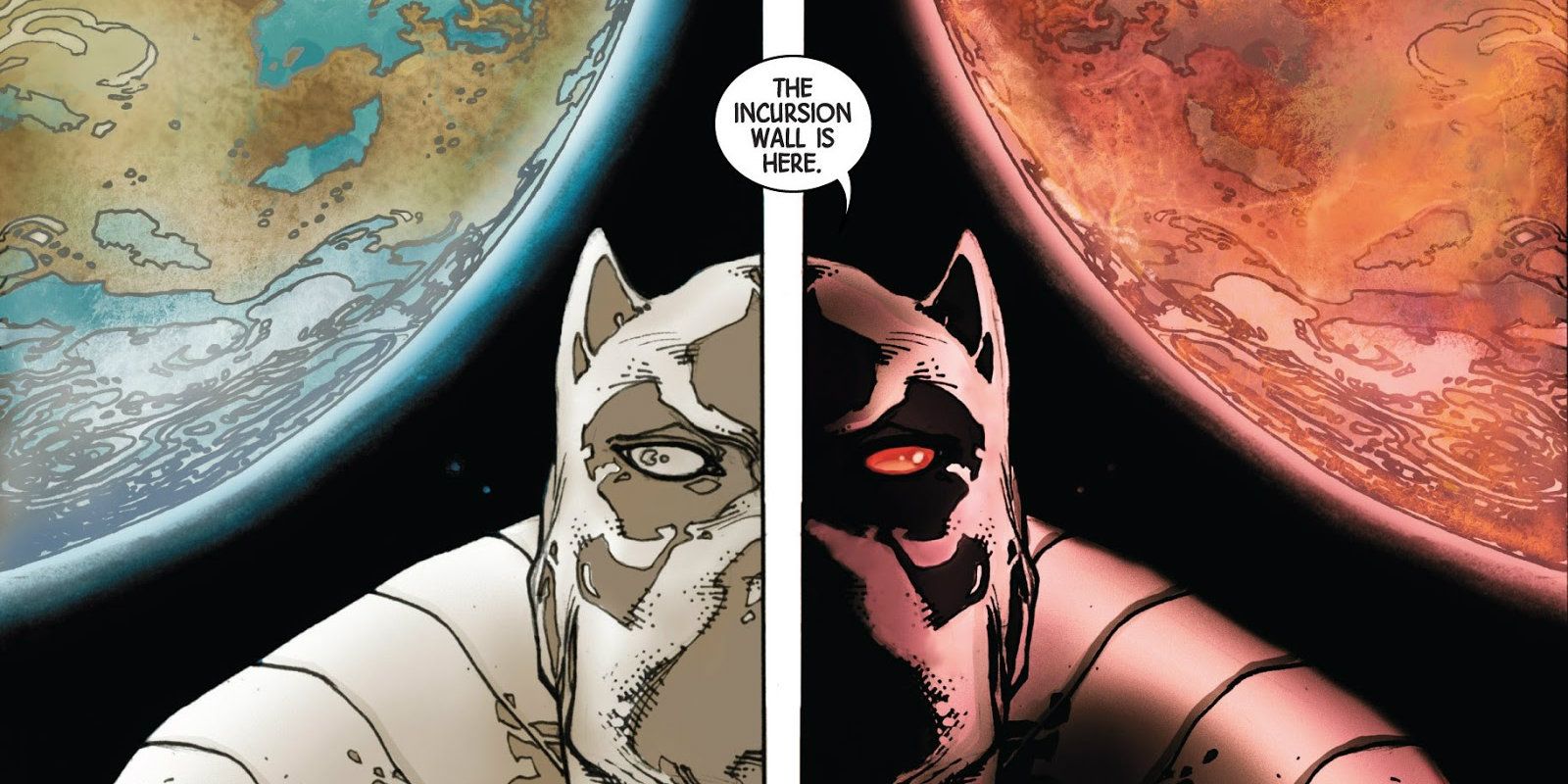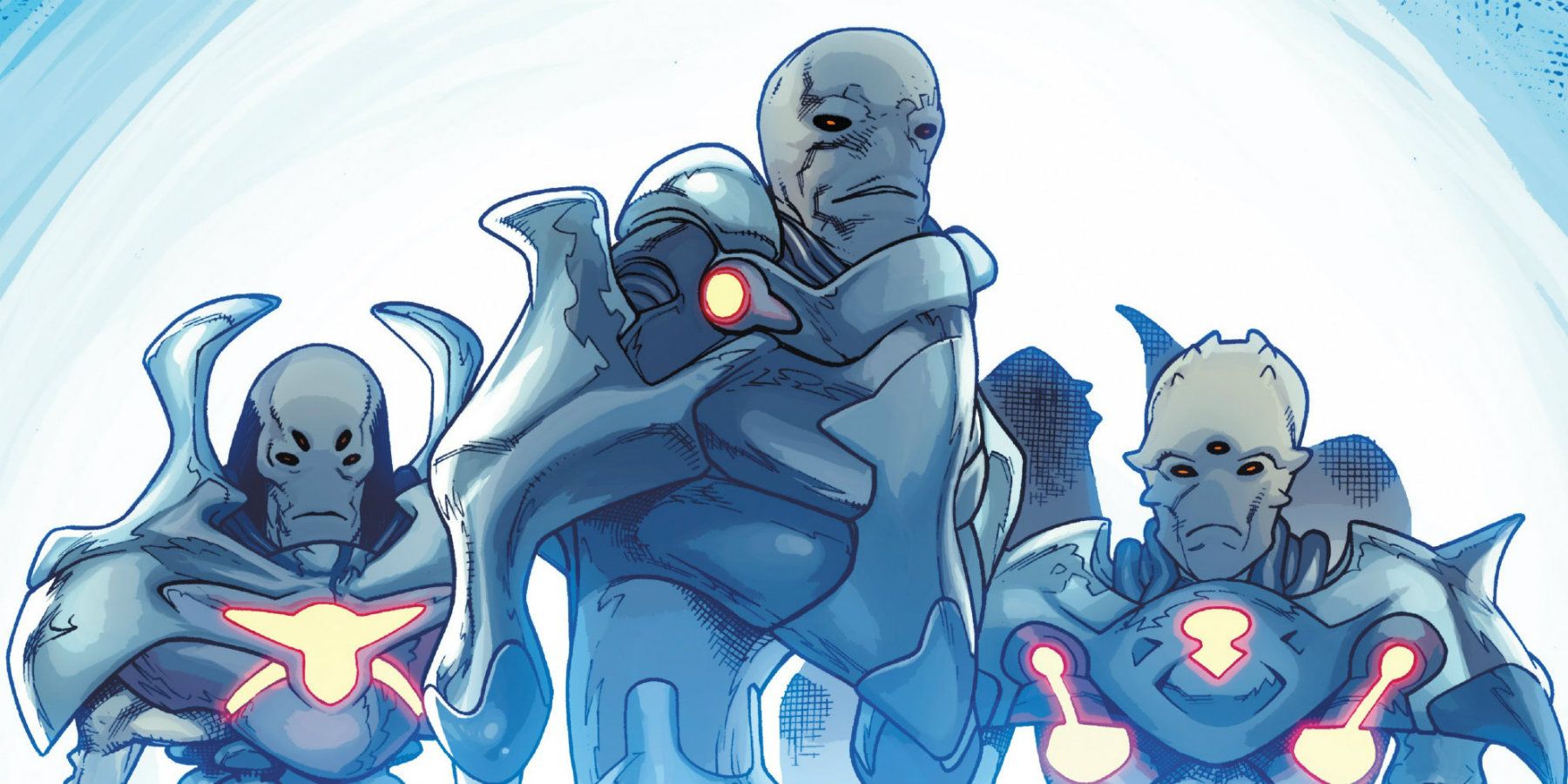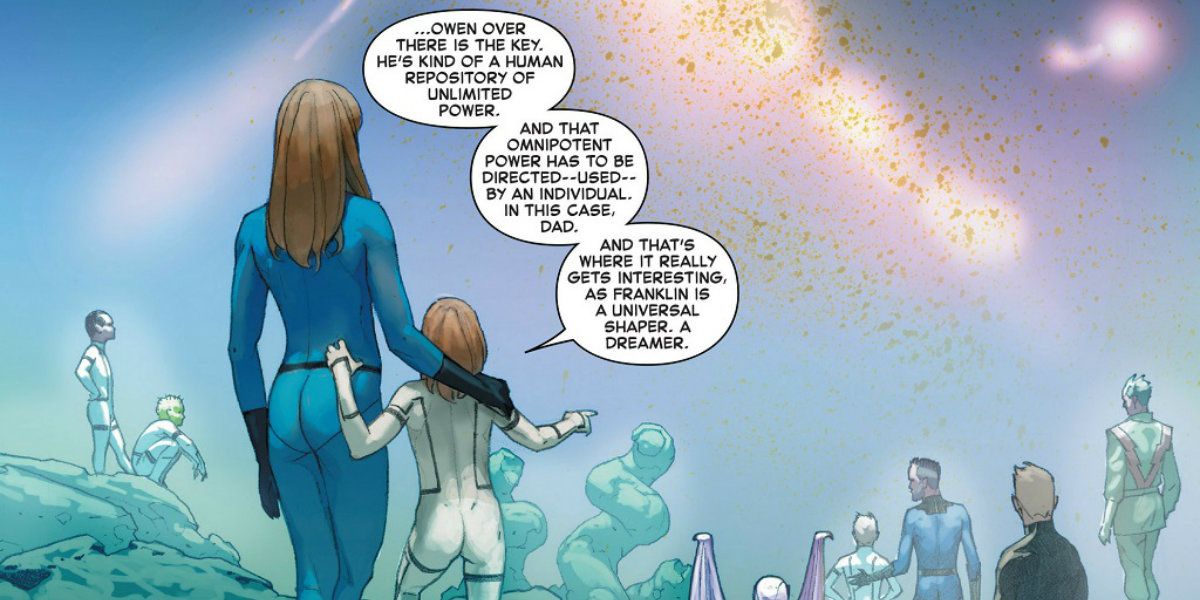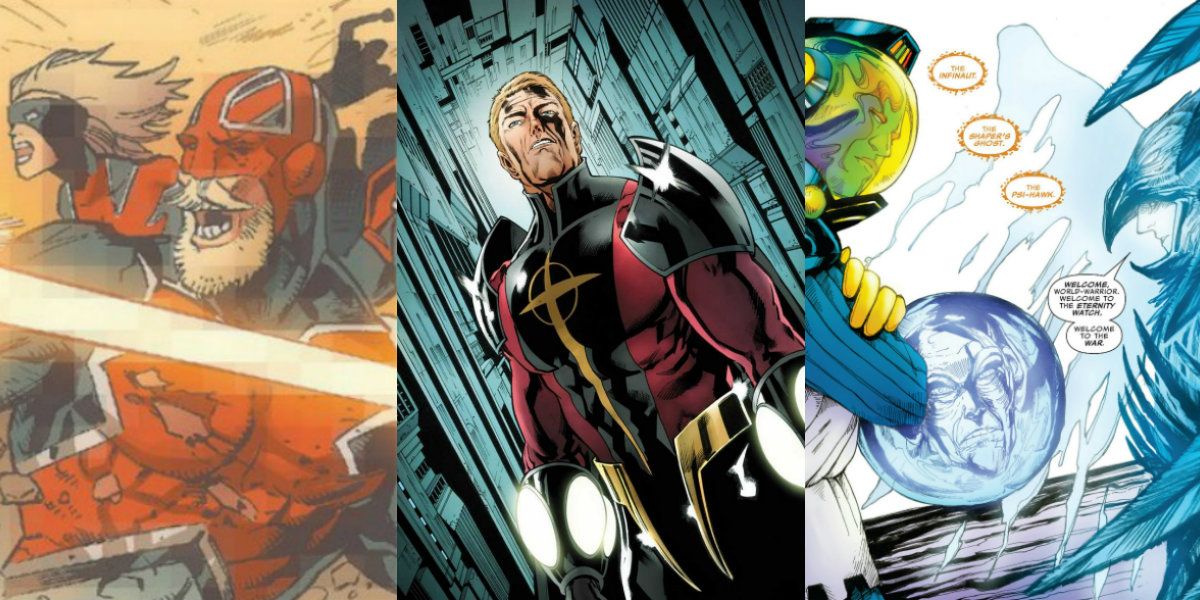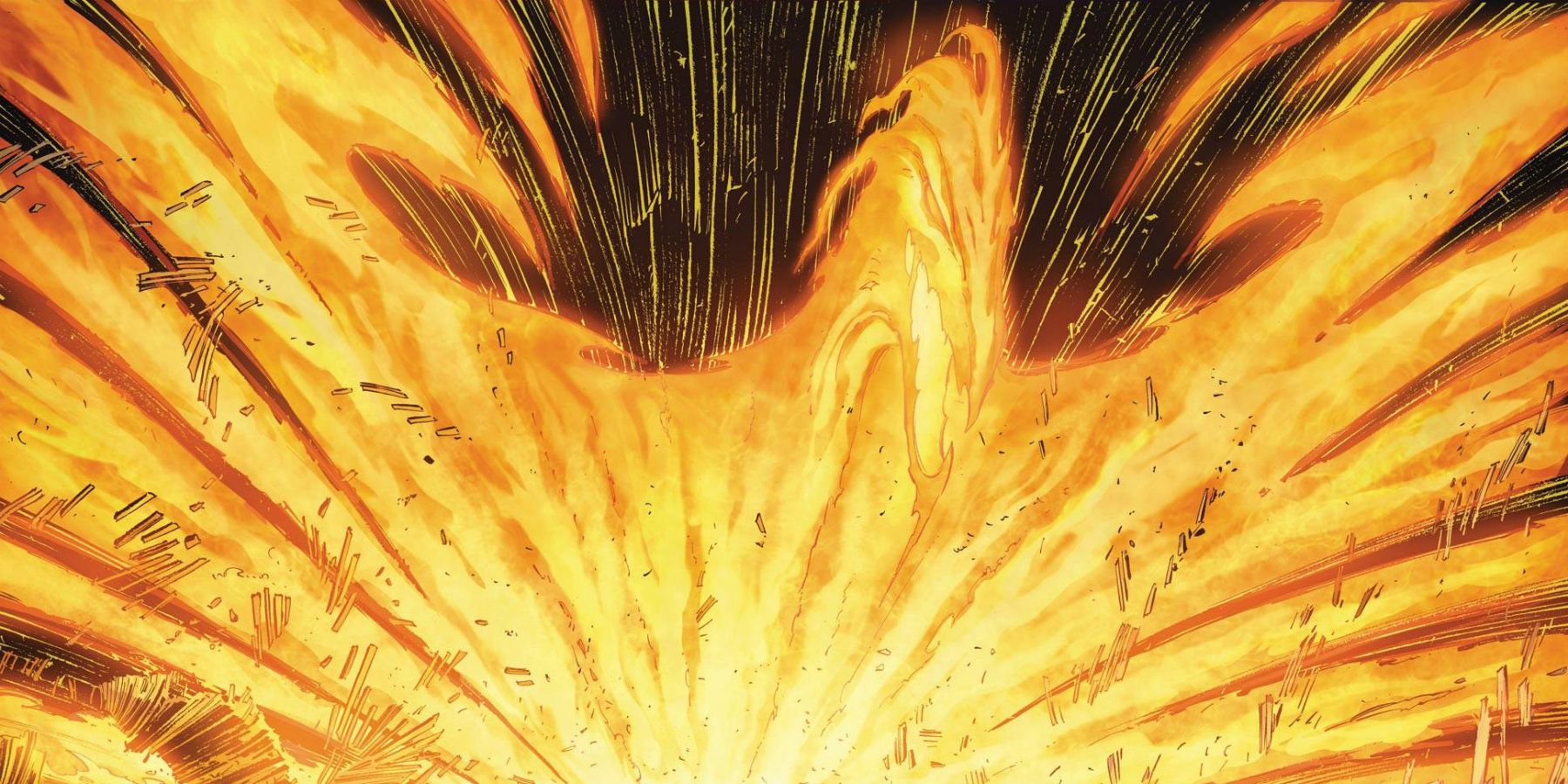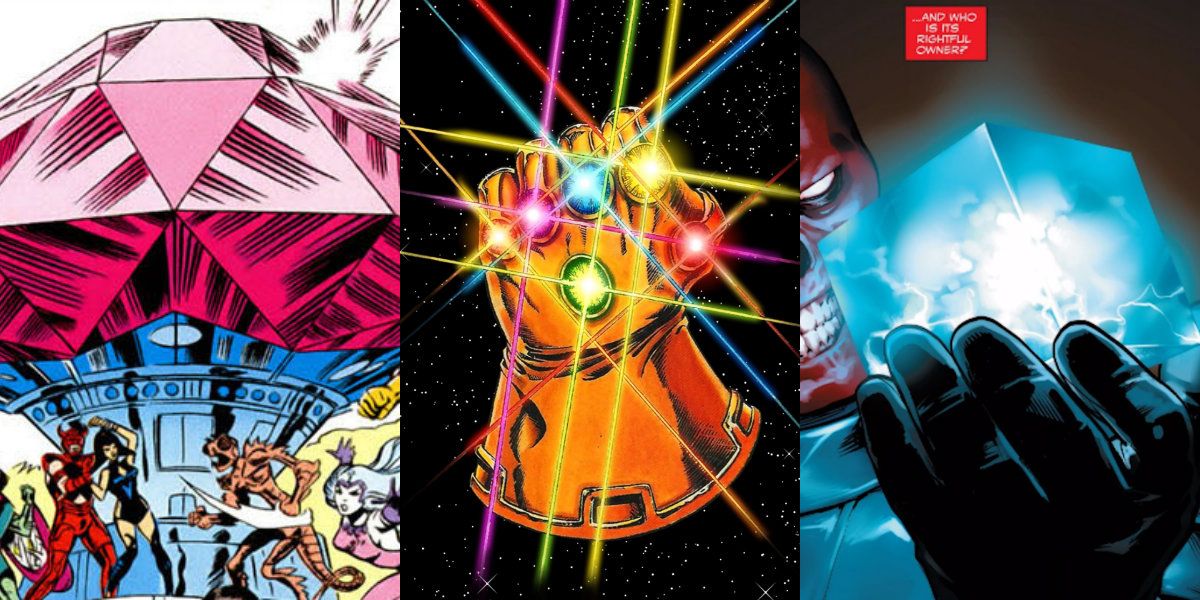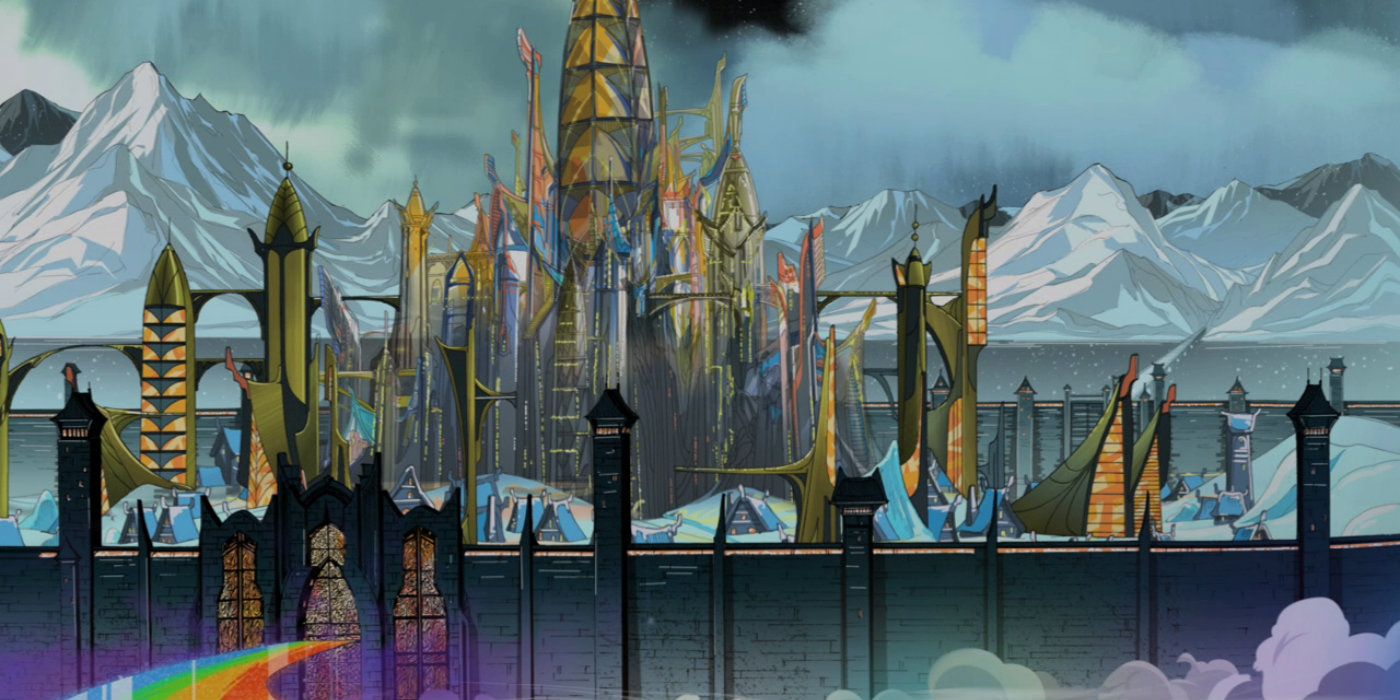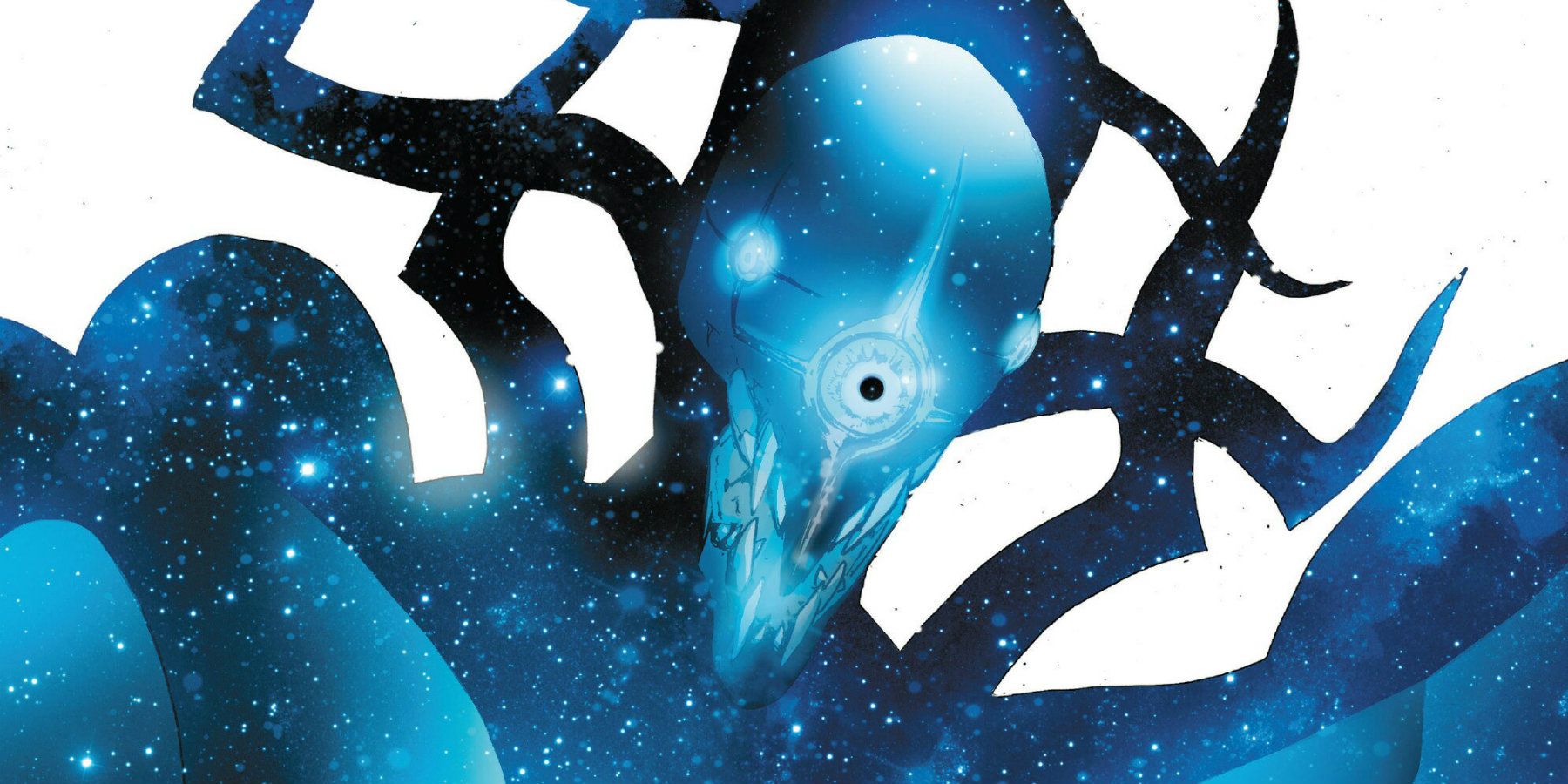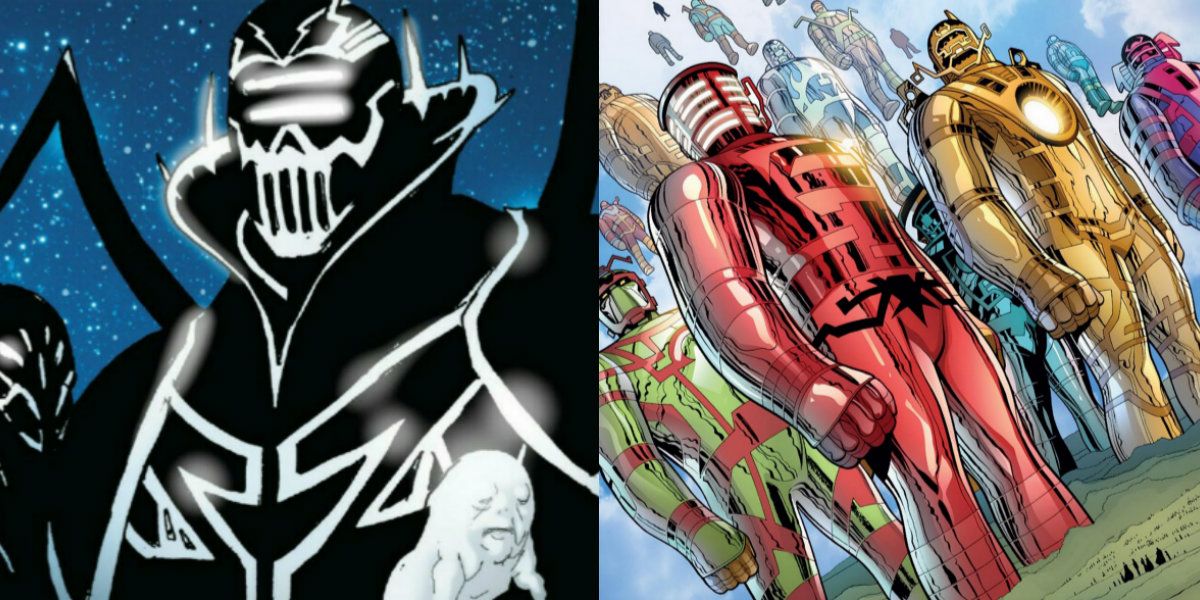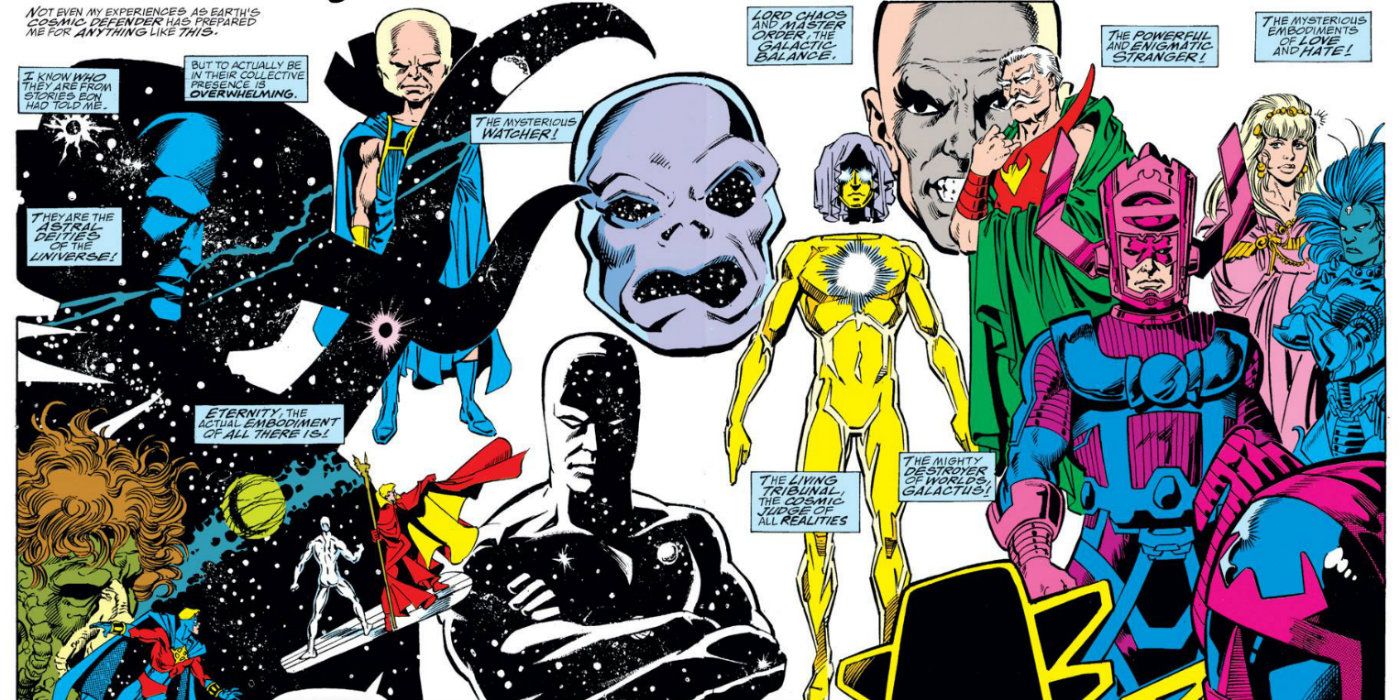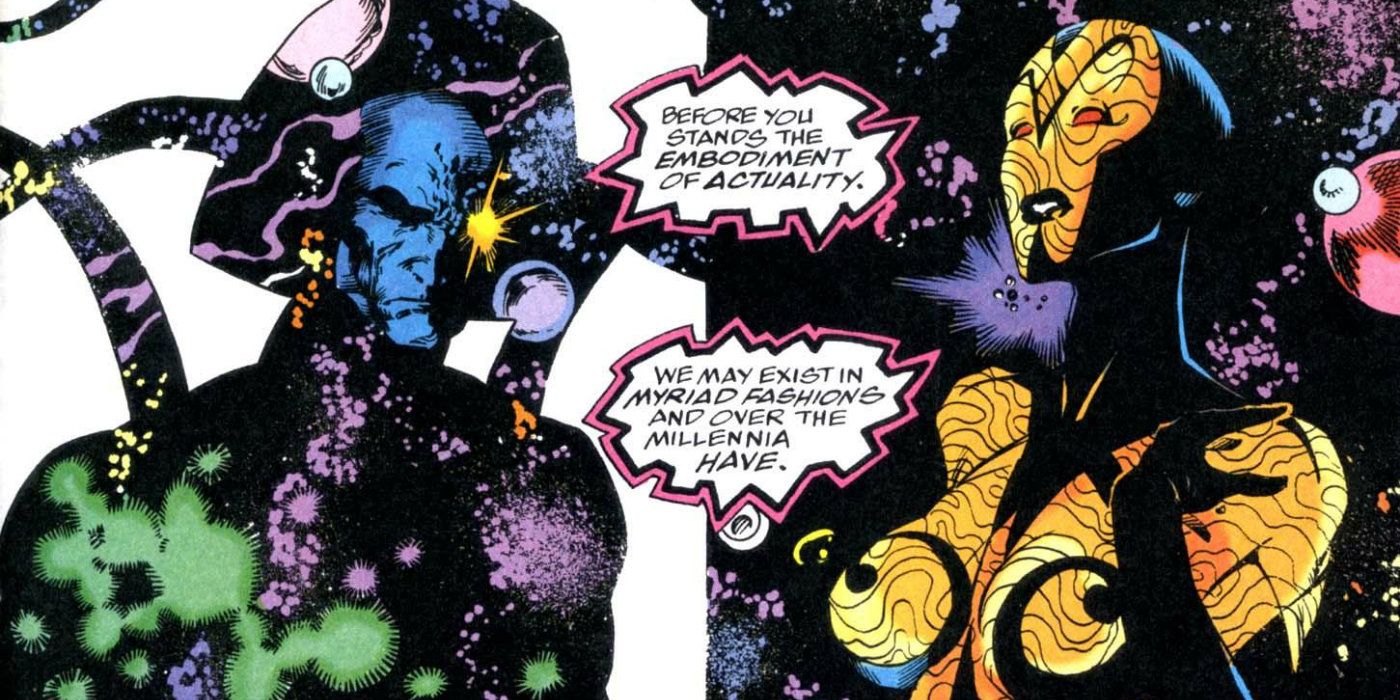The Marvel Multiverse is a vast, sprawling conglomeration of alternate universes spun out of the core Marvel Universe. Over the years, its scope has grown exponentially, constantly expanded and tweaked by successive writers, editors and artists to include virtually every alternate timeline, media platform and divergent reality under the Marvel banner. Marvel’s Multiverse is a fluid, ever-changing conceit that allows for an infinite variety of storytelling possibilities. As such, it’s also one of the most confusing concepts to wrap your head around. Architects such as Mark Gruenwald, Jonathan Hickman and Al Ewing have all explored the Marvel Multiverse, adding layer upon layer of complexity to the fictional realm created by Stan Lee, Jack Kirby, Steve Ditko and others during the Silver Age of Comics.
RELATED: 15 God-Like Marvel Cosmic Beings The MCU Ruined
The product of over a half century's worth of epic stories, the Marvel Multiverse stands apart from similar comic book universes such DC Comics’s recently streamlined Multiversity thanks to its infinite number of permutations. We may never know the entirety of the Marvel Multiverse but that won’t stop us from trying. An attempt to distill its main touchstones into a lean, mean primer of cosmic proportions, here are 15 things you need to know about Marvel’s Multiverse.
SPOILER ALERT! Spoilers ahead for numerous stories published by Marvel Comics.
15 THE OMNIVERSE
According to legendary Marvel editor and writer Mark Gruenwald, the Marvel Multiverse is only one of many multiverses that comprise a vast, limitless "Omniverse" that also includes fictional universes from publishers and creators building stories outside of Marvel’s catalogue. This meta-verse conceivably encompasses all stories and universes regardless of their individual origins. The DC Universe, the Valiant Universe and other fictional works from literature, music and art all share a connection through the imaginations of their creators and their audiences.
That's pretty heady thinking for a medium traditionally viewed as kid’s stuff, right? Gruenwald’s theorem opens the door for an infinite number of storytelling possibilities and taps into readers’ insatiable desire for inter-company crossovers such as DC and Marvel’s popular Amalgam Comics. While it’s unlikely there will ever be another crossover of Amalgam Comics’ size and scope, Gruenwald’s Omniverse does attempt to provide a sound mechanism to allow for the possibility.
14 616 IS THE PRIME NUMBER
Depending on whose account you go by, the appellation of “616” was first applied to Marvel’s prime universe by either Alan Moore or fellow UK scribe David Thorpe. According to Alan Davis, artist of the Marvel UK’s Captain Britain, in which the designation "616" first appeared, Thorpe’s motivation for assigning the prime Marvel Universe a number was borne of his dislike of mainstream superhero comics. He wanted to come up with a riff on the Satanic number of “666.”
In any case, this unofficial designation doesn’t fly with Marvel’s editorial staff. Both Tom Brevoort and Joe Quesada harbor a healthy dislike for the 616 term and prefer the non-numerical labels such as Marvel Universe and Ultimate Universe. That hasn’t stopped fans and online comics outlets from using 616 to differentiate from the scads of alternate universes that have appeared in countless Marvel comics, though.
13 THE ULTIMATE UNIVERSE
During the early 2000s, Marvel created its Ultimate Universe in an attempt to distill decades of established continuity into something far less unwieldy for new readers. Engineered for a modern audience, the Ultimate Universe (typically classified as Earth 1610) was a more grounded, familiar place for readers. Fantastic and wondrous things still occurred but the mechanics governing the Ultimate Universe felt more realistic. The emergence of mutants, aliens and other post-human players had real-world repercussions on a political and societal level.
Although it eventually became bogged down by the weight of its own continuity, the Ultimate Universe was successful in bringing a fresh perspective to some of Marvel’s most popular properties. Recently merged with the mainstream Marvel Universe during 2015's Secret Wars, many of the Ultimate Universe’s concepts provided the basis for Marvel’s Cinematic Universe, as seen in the characters of Hawkeye, Nick Fury and Captain America.
12 CYCLING THROUGH THE MULTIVERSE
As we’ve witnessed in recent titles such as Secret Wars, the sprawling expanse of the Marvel Multiverse isn’t what you would call static. Its existence is marked by constant change and reinvention. Catastrophic events such as Secret Wars illustrate just how fragile the Multiverse is but also serve as a testament to its resiliency.
In Al Ewing’s most recent run of The Ultimates, we discovered that there have been eight iterations of the Marvel Multiverse, the most recent one jump-starting at the end of Secret Wars, thanks to the combined efforts of the Fantastic Four’s Reed Richards and his son Franklin. Typically, the Multiverse reboots from scratch; however, with the elder Richards infused with the power of the Molecule Man, the Eighth Cosmos seemingly took up from where it left off prior to its destruction.
11 UNIVERSES COLLIDE
An "incursion" is the name given to the period of time during which two universes collide, eventually resulting in the destruction of both realities. Incursions are a by-product of the contraction of the Multiverse, which was initiated by the death of the Molecule Man from an undesignated universe 25 years before the events of the most recent Secret Wars. In a way, incursions protracted the eventual destruction of the Multiverse, throwing a monkey wrench in the Beyonders’ plans to flush the whole shebang down the cosmic toilet in one fell swirl.
The only way for a universe to survive an incursion is to destroy the encroaching reality during an eight hour window before they collide. During those eight hours, the two universes align with no ill effects to either reality, allowing those in the know to implement survival strategies, which of a necessity must result in the annihilation of one universe.
10 THEY CAME FROM BEYOND
The extra-dimensional race of aliens known as the Beyonders existed outside of the Multiverse. Their power levels were off the chart, fueling the creation of several reality-altering items such as the Cosmic Cube. One such sentient Cube took the name of its benefactors and was responsible for the first Secret Wars event, which saw dueling armies of superheroes and villains transported to distant world to do battle. The race claims responsibility for the most recent Secret Wars through its creation of the Molecule Man.
Essentially a ticking multiversal time bomb, the Molecule Man is a singularity that exists across all universes. The Beyonders sought to trigger the destruction of the Multiverse by killing Molecule Man in every universe simultaneously. Their scheme was thwarted when the Molecule Man of the prime Marvel Universe killed his counterpart from an unknown universe 25 years in the past before the Beyonders could kill him in all universes.
9 FANTASTIC FIXERS
It’s only fitting that we have the Fantastic Four to thank for the creation of the eighth iteration of the Marvel Multiverse. After all, the birth of Marvel’s “first family” kicked off the Silver Age and provided the foundation for the Marvel Universe we’ve all come to know and love over the last several decades. During Secret Wars, the Reed Richards of the prime Marvel Universe was thought lost during the final incursion between Earth 616 and Earth 1610 (the Ultimate Universe).
After emerging from a cosmic life raft, Reed slugged it out with his perennial nemesis Doctor Doom, who’d set himself up as god emperor of the newly-formed Battleworld. Reed supplanted Doom as the bearer of the Molecule Man’s vast powers and promptly set about rebuilding the Multiverse, using his son Franklin’s superhuman imagination as the catalyst for the reconstruction.
8 UNIVERSAL PROTECTION
The Marvel Multiverse provides for its own safeguarding through the existence of various agents of protection. Most often acting within the confines of a single reality, these “Protectors of the Universe” have counted among their numbers some of Marvel’s most beloved heroes. The Kree soldier Captain Mar-Vell was arguably the most well-known of these cosmic guardians but his death from cancer left the role unfilled, until Eon bestowed the honor on Wendell Vaughn, the first Quasar. Mar-Vell’s descendants Genis-Vell and Phyla-Vell also served as Protectors of the Universe for a short time.
The Captain Britain Corps operated on a grander scale, protecting the entire Multiverse until its destruction during the “Time Runs Out” storyline. Most recently, Galactus the Lifebringer, assembled a team of cosmic entities to battle the malevolent First Firmament. His Eternity Watch included Psi-Hawk, Ego-Prime, the Infinaut and the ghost of the Shaper of Worlds.
7 THE PHOENIX FORCE
Often depicted as a cosmic agent of destruction, the Phoenix Force is also a catalyst for change and rebirth. Though feared throughout the universe, its true purpose is to preserve life and engender change on a cosmic level. If that means it must destroy something that doesn’t work to preserve or create something that does, that’s just part of the grand plan. Take Galactus, for example.
Once known as Galan of Taa, Galactus was the lone survivor of the Sixth Cosmos, rescued from his reality’s destruction by the Phoenix Force. Although he became the fearsome World Devourer in the Seventh Cosmos, it was only because his cosmic incubator was damaged. When the Ultimates transformed him into the Lifebringer by forcing him back into his repaired incubator, he fulfilled his true purpose as a guardian of life in the universe. Without the Phoenix Force’s intervention, Galan would never have survived to become Galactus.
6 COSMIC BLING
Over the years, there has been no shortage of cosmic bling in the Marvel Multiverse. Marvel’s cosmic playground has ever been subject to the whims of objects of immense, reality-altering power. The original Beyonder, who was responsible for the first Secret War, was recently revealed to be a sentient Cosmic Cube that took the name of the aliens that provided his immense power.
Kobik of Secret Empire fame is another such sentient Cube that recently rocked the prime Marvel Universe to its moral core. The infamous M’Kraan Crystal is a cosmic nexus point allowing any who cross its threshold to travel to any universe they desire. The Infinity Gauntlet, on the other hand, allows the bearer absolute control over the nature of reality itself in that particular universe (though it is useless in others). While the effects of the various Cosmic Cubes tend to be localized, the Infinity Gauntlet could conceivably rewrite reality on a universal scale, as the Mad Titan Thanos notoriously illustrated.
5 DIMENSIONS IN YOUR POCKET
If the Multiverse encompasses an infinite number of alternate universes, then how do we classify realms such as Limbo or the Microverse? Don’t worry, there is an established hierarchy of sorts. First, you have the Omniverse, a metafictional idea-space that encompasses all fictional universes regardless of origin. Then, you have the Marvel Multiverse, an infinite collection of alternate universes such as the prime 616 Marvel Universe and the Ultimate Universe.
Then there are pocket dimensions such as Limbo, Asgard and the Microverse. Each universe in the Multiverse boasts its own versions of these pocket dimensions, making it possible, for example, for both the Ultimate Universe and the 616 Universe to have its own versions of Thor. There are exceptions to the rule. Counter Earth, created by Franklin Richards during Heroes Reborn, was originally a pocket dimension but was later brought into the 616 Universe to its position on the opposite side of the sun.
4 THE FIRST FIRMAMENT
Big Bads don’t get any bigger or badder than the main antagonist of Al Ewing and Travel Foreman’s defining run on The Ultimates. Introduced in the recently-cancelled series’ fifth issue, the First Firmament is the sentient embodiment of Marvel’s First Cosmos. Although it was thought to be destroyed during the war between its offspring the Celestials and the Aspirants, the First Firmament had only retreated to the fringes of existence, biding its time until it could return to its rightful position as the sole universe.
To realize its goal of reclaiming existence for itself, the First Firmament put the Eighth Cosmos, Eternity, in chains. Galactus assembled both his Eternity Watch and the Ultimates to battle the First Firmament on two fronts. For a time, it seemed like all was lost, until the intervention of the Ultimate Ultimates, the embodiments of all the previous Multiverses, who took Marvel’s corrupted First Cosmos into custody.
3 CELESTIAL BODIES
The immensely powerful cosmic beings known as the Celestials were created by Jack Kirby and first appeared way back 1976’s Eternals #2. Responsible for seeding the universe with higher forms of life, such as the Eternals, the Celestials operate on a different level than lesser beings. As was revealed in Al Ewing and Travel Foreman’s The Ultimates, the Celestials and their brethren the Aspirants were the creations of the First Firmament.
The Aspirants were loyal to their creator but the Celestials rebelled against the First Cosmos, desiring to inject diversity into existence. The rival offspring engaged in a cosmic war that only ended when the Celestials succeeded in shattering the First Firmament. From its fragments the Second Cosmos, the first true Multiverse came into being.
2 COSMIC ABSTRACTS
Unlike its DC Comics counterpart, Marvel’s Multiverse attempts to incorporate what it refers to as cosmic abstracts into its multiversal hierarchy. Even the Multiverse itself is personified in the form of Eternity, literally everything that is known. Other abstracts given form include Master Order and Lord Chaos, the Living Tribunal (arbiter of universal justice), Death (subject of Thanos’ unrequited love), Love, Hate and Oblivion.
Recently, spurred by Galactus’ rebirth as the Lifebringer, Master Order and Lord Chaos murdered the Living Tribunal, with all three entities merging to form Logos, the new code of universal law. During the ensuing Eternity War, Logos was torn asunder into its component parts by the Black Panther, who had ascended to the war’s plane of existence as the Tiger God, the embodiment of humanity’s first fear. Master Order and Lord Chaos were then taken into custody by the Living Tribunal.
1 TO ETERNITY (AND INFINITY) AND BEYOND!
Eternity and Infinity were originally considered brother and sister. Cosmic abstracts that helped uphold the weight of existence, Eternity represented time, while Infinity represented space. Together, they embodied the entirety of the space-time continuum. Recent developments in The Ultimates add another layer of complexity to these entities. The series’ final issue states that Infinity was the embodiment of the Seventh Cosmos, the one destroyed during Secret Wars, while her brother Eternity, cast into chains by the First Firmament, represents the current Eighth Cosmos.
This seems to fly in the face of previous continuity, which depicted Eternity and Infinity as separate yet conjoined entities. Maybe that was in the universe next door? Whatever the case, Infinity returned in the nick of time to free Eternity (along with several previous incarnations of the Multiverse) to take the First Firmament into custody, hoping to heal their misguided forerunner.
Did we skip a topic in our cosmic primer? Let us know in the Comments!

